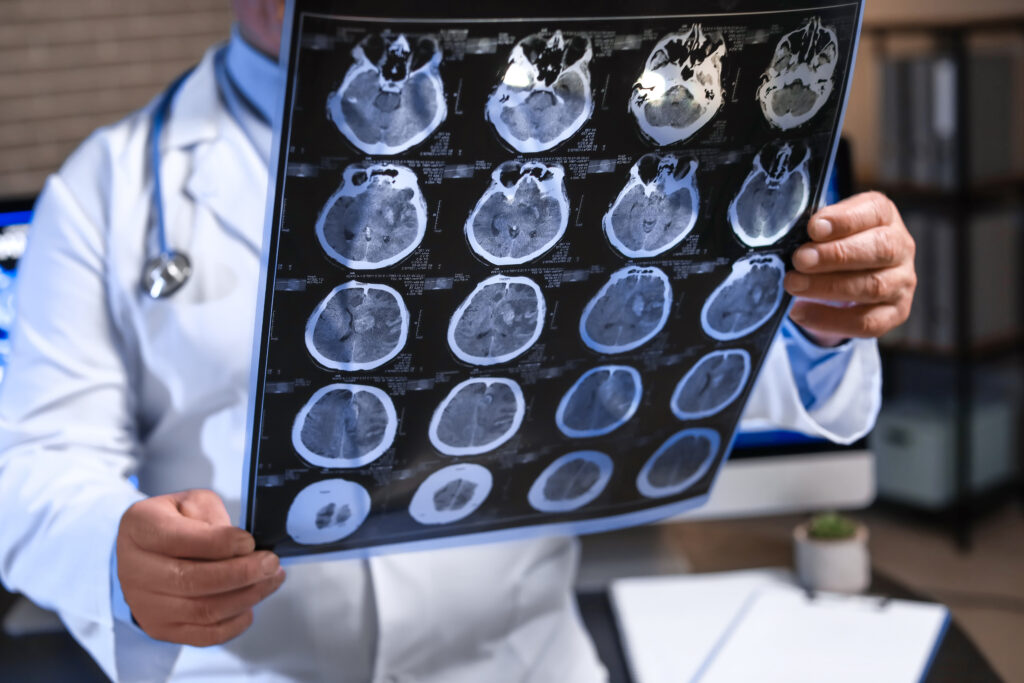Even while wearing a helmet, motorcyclists and bicyclists may still suffer a head injury in a serious crash. Helmets are designed to reduce the risk of severe head injuries by absorbing impact and distributing forces across the skull. However, they cannot completely eliminate the risk. Factors such as the helmet’s fit, quality, and the nature of the crash play significant roles in protection. For instance, a high-velocity crash or a collision at specific angles can still lead to concussions and other traumatic brain injuries, even with a helmet.
If you sustained a head injury in a motorcycle or bicycle accident, an experienced personal injury lawyer in Edmonton can handle every step of your claim or lawsuit. Your lawyer can gather the appropriate evidence, file a claim or lawsuit, and aggressively negotiate for the compensation you deserve. If the insurance company does not make you a reasonable settlement offer, your lawyer can then pursue litigation in the court system on your behalf.
Types of Motorcycle and Bicycle Accidents that Cause Head Injuries
Motorcycle and bicycle accidents often result in severe head injuries, primarily due to the negligence of other drivers.
- One of the most common types of accidents is the “left turn” collision. This occurs when a car making a left turn fails to see an oncoming motorcycle or bicycle. Drivers may be distracted, underestimate the speed of the approaching rider, or simply fail to check for smaller vehicles in their blind spots. This type of negligence can lead to direct impacts, causing serious head injuries, including concussions and other traumatic brain injuries.
- Another frequent scenario is the “dooring” incident, which predominantly affects bicyclists. This occurs when a parked vehicle’s occupant opens the door without checking for approaching cyclists. A cyclist colliding with an open door can be thrown off balance, often resulting in head injuries. Drivers may neglect to look in their mirrors, leading to a preventable accident.
- “Right of way” violations are also a significant cause of accidents for both motorcyclists and bicyclists. When a driver disregards traffic signals or fails to yield to a motorcycle or bicycle, the consequences can be catastrophic. For instance, a vehicle running a red light can collide with a motorcycle, causing the rider to be thrown off and suffer severe head trauma. This negligence stems from a lack of attention to the road and traffic laws.
- Distracted driving is a major contributor to motorcycle and bicycle accidents. When drivers use their phones, adjust their radios, or engage in other distractions while driving, they may fail to notice bicyclists or motorcyclists sharing the road. This can result in side-swipe accidents or sudden stops, both of which can lead to serious head injuries for riders who are unable to react in time.
- Lastly, speeding plays a critical role in the severity of accidents. A driver travelling too fast may not have enough time to react to a motorcycle or bicycle in their path, resulting in high-impact collisions. The increased force of these crashes greatly heightens the risk of head injuries for riders, who are already vulnerable without the protection of a vehicle.
Types of Medical Treatment for Head Injuries

Victims of head injuries resulting from motorcycle or bicycle accidents often require a variety of medical treatments, depending on the severity of their injuries. These treatments are important for recovery and can significantly affect a victim’s quality of life.
- One of the primary forms of treatment for head injuries is emergency care. When a person suffers a head injury in an accident, they may experience symptoms such as loss of consciousness, confusion, or severe headaches. Emergency medical personnel will perform a quick assessment, including vital signs and neurological evaluations, to determine the extent of the injury. If necessary, they may perform imaging tests like CT scans or MRIs to identify any bleeding, swelling, or fractures in the skull.
- If the head injury is serious, hospitalization may be required. In a hospital setting, doctors can monitor the accident victim closely for any complications. Treatments during hospitalization may include medication to manage pain, reduce swelling, and prevent seizures. In some cases, surgery may be necessary to relieve pressure on the brain due to swelling or to repair damaged blood vessels.
- For those with concussions, initial treatment may focus on rest and gradual return to normal activities. Doctors typically recommend a period of physical and cognitive rest, which may involve limiting screen time, reading, and engaging in strenuous activities. Over time, a structured rehabilitation program may be introduced, which can include physical therapy, occupational therapy, and cognitive therapy to help patients regain their strength, coordination, and cognitive functions.
- Rehabilitation plays a significant role in the recovery process for head injury victims. Physical therapy can help improve balance and coordination, while occupational therapy focuses on assisting accident victims in returning to daily activities and work. Cognitive therapy can address memory issues, attention deficits, and other cognitive challenges that may arise following a head injury.
In addition to professional medical care, emotional and psychological support is often necessary. Many individuals experience anxiety, depression, or mood swings after sustaining a head injury in a bicycle or motorcycle accident. Counselling or support groups can help victims cope with these emotional challenges, facilitating a more comprehensive recovery.
Proving a Head Injury in Motorcycle and Bicycle Accident Claims

Proving a head injury in a motorcycle or bicycle accident case involves a combination of medical documentation, witness testimony, and evidence collection. Establishing the extent of the injury and its effect on the victim’s life is essential for pursuing compensation.
- The first step in proving a head injury is obtaining thorough medical documentation. Medical records should detail the diagnosis, treatment, and any imaging studies, such as CT scans or MRIs, that reveal the extent of the injury. These documents serve as important evidence, establishing a direct link between the accident and the head injury. Additionally, follow-up appointments, therapy notes, and prescriptions for pain management or rehabilitation will further support the claim.
- Next, it’s important to maintain a record of symptoms experienced after the accident. Victims should document any physical, cognitive, or emotional changes, such as headaches, memory issues, or mood swings. Keeping a personal journal can be beneficial for capturing the daily effects of the head injury on one’s life, which can strengthen the case for compensation.
- Witness testimony can also play a significant role in proving a head injury. Eyewitness accounts of the motorcycle or bicycle accident can help establish liability – especially if the testimony corroborates the victim’s account of events. Witnesses can provide information about the circumstances leading up to the accident, including the actions of the other driver or any unsafe conditions that contributed to the collision. This testimony can lend credibility to the victim’s claims of negligence and the resulting head injury.
- Collecting evidence from the accident scene is also important. This may include photos of the scene, damage to the vehicles, and road conditions. Surveillance footage from nearby businesses or traffic cameras can also provide valuable evidence. If available, police reports documenting the accident details and any citations issued to the other party can further support the victim’s case.
An experienced motorcycle and bicycle accident lawyer can gather evidence, identify expert witnesses, and work to establish a clear connection between the accident and your head injury.
How Much Money Will I Receive for a Motorcycle or Bike Accident Head Injury Claim?

Compensation for head injuries resulting from motorcycle or bicycle accidents can vary significantly based on several factors, including the specific type of head injury, the severity of the head injury, the effects on the accident victim’s life, and the extent of the victim’s pain, suffering, and inconvenience.
- One significant category of compensation is lost income. If a victim suffers a head injury, they may be unable to work for a period, leading to lost income. This compensation covers the earnings lost during recovery, as well as any future earning potential (if the injury results in a long-term or permanent disability). For example, if a person typically earns $4,000 per month and is unable to work for three months due to their injury, they may recover $12,000 in lost income.
- Pain and suffering is another key component of compensation. This category refers to the physical and emotional distress experienced as a direct result of the head injury. Calculating pain and suffering can be complicated, as it involves assessing the severity of the injury, the duration of recovery, and the overall effect on the victim’s quality of life.
- Loss of life enjoyment is also a recoverable form of compensation. If the head injury prevents a victim from participating in activities they once enjoyed, such as hobbies, sports, or social engagements, they may be entitled to receive compensation for this loss. This form of compensation recognizes the negative effects a head injury can have on a person’s overall happiness and fulfillment.
- Finally, if the negligent party acted particularly recklessly or intentionally, punitive damages may be pursued. These damages are meant to punish the wrongdoer and deter similar behaviour in the future. The amount awarded in punitive damages can be substantial, reflecting the severity of the at-fault party’s negligence.
Understanding these categories can empower victims to seek the compensation they deserve for their accident-related injuries and hardships.
How Can an Experienced Personal Injury Lawyer Help with My Head Injury Case?
A knowledgeable motorcycle and bicycle accident lawyer can play a vital role in navigating a head injury case. Their legal knowledge and skill can significantly enhance a victim’s chances of obtaining fair compensation for their injuries and related losses. Here are several ways these lawyers can assist throughout the legal process.

- First, an experienced lawyer will conduct a thorough investigation of the motorcycle or bicycle accident. This involves gathering evidence such as police reports, witness statements, and accident scene photographs. They may also review medical records to understand the extent of the head injury and its effect on the victim’s life. By compiling all relevant information, the lawyer can build a strong case that establishes liability and demonstrates the effects of the head injury.
- Next, the lawyer will assess the full extent of the damages. This includes not just immediate losses, like lost income and pain and suffering, but also long-term implications, such as diminished earning capacity. A knowledgeable lawyer can work with various experts to estimate these future costs, ensuring that the compensation sought reflects the victim’s needs over time.
- Negotiating with insurance companies is another critical area where a lawyer’s knowledge and skill are invaluable. Insurance adjusters often aim to minimize payouts, using tactics to undermine the victim’s claim. A skilled lawyer understands these strategies and can effectively counter them. They will advocate for the victim’s rights, negotiating a settlement that accurately reflects the true value of the head injury claim. If necessary, they can prepare to take the case to court, ensuring that the victim’s interests are represented throughout the process.
- Furthermore, a motorcycle and bicycle accident lawyer can help victims understand their legal rights and options. Many individuals are unaware of the compensation they may be entitled to receive, including damages for emotional distress or loss of life enjoyment. A knowledgeable lawyer can explain these aspects and help victims navigate the legal system with confidence.
- Lastly, having a lawyer can alleviate the stress and burden that often accompanies legal proceedings. Victims can focus on their medical recovery while their lawyer handles the intricate details of their case. This support is particularly important for individuals dealing with the physical and emotional challenges of a head injury.
A lawyer’s legal knowledge and skill can make a significant difference in achieving a successful outcome for victims of head injuries who are seeking justice and compensation.
Speak with a Knowledgeable Motorcycle and Bicycle Accident Lawyer Right Away
If you sustained a head injury in a motorcycle or bicycle crash, a skilled lawyer can be an invaluable help. Your lawyer will first investigate the circumstances surrounding your accident and determine your legal options. They can then file a claim or lawsuit on your behalf and pursue the damages you need to become whole again.
